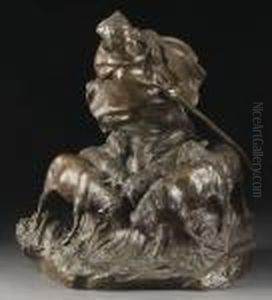Charles Korschann Paintings
Charles Korschann was a renowned Czech Art Nouveau sculptor and medallist. Born on July 17, 1872, in Králové Pole, which is now part of the city of Brno in the Czech Republic, Korschann was an influential figure in the realm of decorative arts during the late 19th and early 20th centuries.
Korschann's work is largely characterized by the flowing lines and natural forms typical of the Art Nouveau movement. His sculptures often featured allegorical themes, mythological subjects, and female figures, which he rendered with a sense of elegance and an appreciation for the female form. His style incorporated elements of symbolism and was often marked by a sensuality that was quite progressive for his time.
In addition to his sculptures, Korschann was also known for his medallic art. He created a number of plaques and medals, which were popular collector's items during the Art Nouveau period. These works showcased his careful attention to detail and his ability to work on a smaller scale while still conveying a high level of artistry.
During his career, Korschann was active in various artistic circles and participated in numerous exhibitions. His works were exhibited not only in the Czech lands but also internationally, contributing to his reputation as an accomplished sculptor.
Despite his achievements, Charles Korschann's work, much like that of many of his contemporaries in the Art Nouveau movement, became less fashionable with the advent of new art movements such as Cubism and Expressionism. However, his contributions to the Art Nouveau style have been reassessed and celebrated in more recent times, with art historians and collectors showing renewed interest in his work.
Charles Korschann died on April 5, 1943, in Paris, France. Today, his work can be found in museums and private collections around the world, and he is remembered as one of the notable sculptors of the Art Nouveau period, whose artistic vision helped shape the aesthetic of his time.
